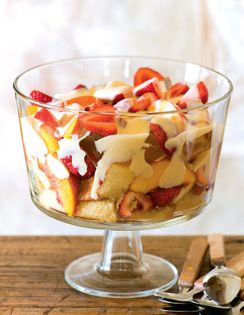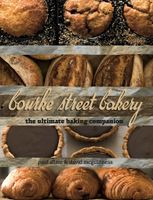Advertisement

Preparation info
- Serves
10
- Difficulty
Medium
Appears in
By Paul Allam and David McGuinness
Published 2009
The crème anglaise used in this trifle is a pouring custard about the same consistency as pouring cream, although it ends up as more of a sloppy mess than the set trifles most people are used to. Crème anglaise is also perfect served warm or cold and poured over fresh seasonal fruit. It is an excellent accompaniment for the flourless chocolate cake. If you plan to take the trifle to a picnic you should use the crème pâtissièr



